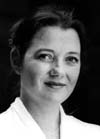The Person in Hebrew ScripturesIt is now widely agreed that the predominant understanding of the human being in the Hebrew scriptures is holistic and nonreductive physicalist. Jewish scholar Neil Gillman writes: Biblical anthropology knows nothing of this dualistic picture of a person which claims that a human being is a composite of two entities, a material body and a spiritual or non-material soul. . . . The [Hebrew] Bible, in contrast, portrays each human as a single entity, clothed in clay-like flesh which is animated or vivified by a life-giving spark or impulse variously called ruah, nefesh, neshamah, or nishmat hayyim. . . . In the later tradition, these terms came to be understood
as synonymous with the Greek "soul." But this identification
is not in the Bible. For example, nefesh first meant neck or throat; by extension it signified a living being. Neshamah and ruah both mean breath or wind. Since death is the going out of the breath, it was possible to identify "something that goes out when one dies" with Plato's soul.
Email link | Printer-friendly | Feedback | Contributed by: Dr. Nancey Murphy |






